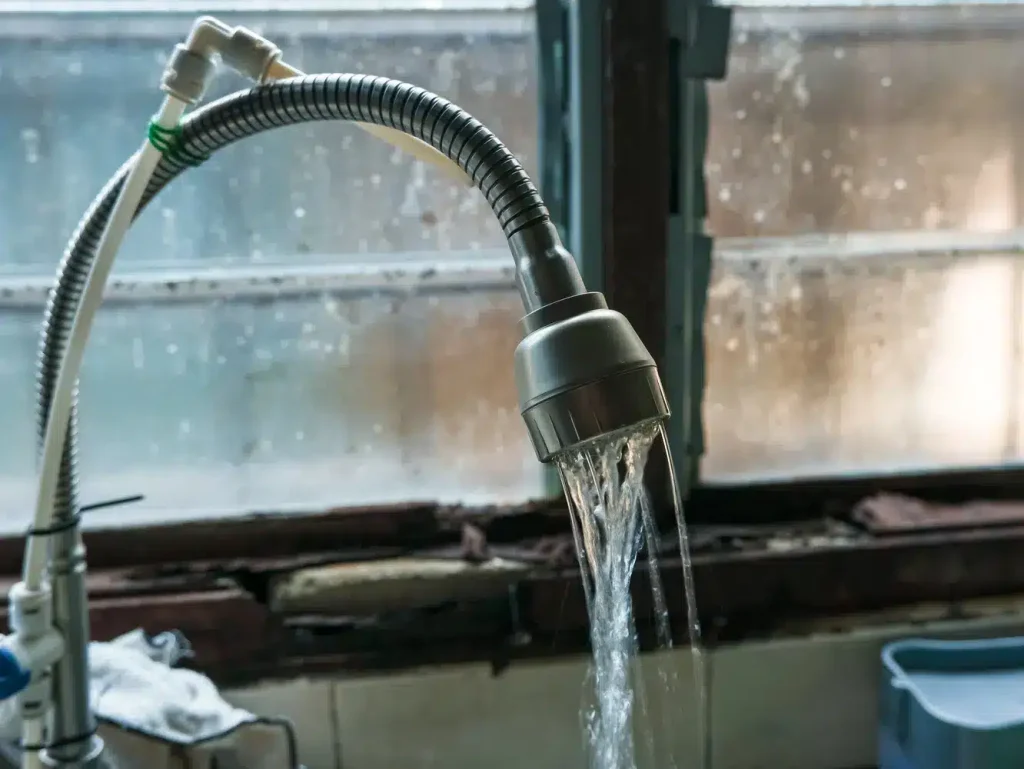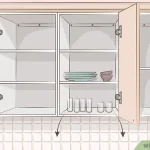Water pressure is important for your kitchen sink. Low water pressure makes it hard to wash dishes or fill pots. This article will help you find ways to increase water pressure.
Understanding Water Pressure
Water pressure is the force of water coming from your faucet. High pressure means more water flows quickly. Low pressure means water flows slowly. Many people want better water flow in their kitchens.
Common Reasons for Low Water Pressure
Before fixing the problem, you need to know why it happens. Here are some common reasons:
- Clogged aerator
- Leaky pipes
- Partially closed valves
- Water supply issues
- Old plumbing

Credit: www.reddit.com
Step 1: Check the Aerator
The aerator is a small screen at the end of your faucet. It mixes air with water. This helps save water and reduce splashing. But if it gets clogged, water flow slows down.
How To Clean The Aerator
- Turn off the water supply.
- Unscrew the aerator from the faucet.
- Rinse it under water to remove dirt.
- Use a brush to clean hard-to-reach areas.
- Reattach the aerator and turn on the water.
Step 2: Inspect the Faucet
Sometimes, the faucet itself can cause low pressure. Check for leaks or damage. If you see water dripping, it might need repair.
If the faucet is too old, consider getting a new one. New faucets often have better flow rates.

Credit: www.wikihow.com
Step 3: Check the Water Supply Valve
Every sink has a water supply valve. This valve controls the water flow. Sometimes, it can be partially closed. This can reduce water pressure.
How To Adjust The Valve
- Find the valve under the sink.
- Turn the valve counterclockwise to open it.
- Make sure it is fully open.
- Test the water flow again.
Step 4: Look for Leaks
Leaks in pipes can cause low water pressure. Check all pipes under the sink. Look for water stains or damp spots.
What To Do If You Find A Leak
- Turn off the water supply.
- Use plumber’s tape for small leaks.
- For big leaks, call a plumber.
Step 5: Check the Main Water Line
Sometimes, the problem is not in your kitchen. It could be in the main water line. If your neighbors have low pressure, the issue might be bigger.
You can contact your water supplier. They can help check the water supply in your area.
Step 6: Consider a Water Pressure Booster
If you still have low pressure, think about a water pressure booster. This is a device that increases water pressure. It can be helpful for homes with low water supply.
Choosing A Water Pressure Booster
- Look for one that fits your kitchen.
- Check reviews for good options.
- Consider hiring a plumber to install it.
Step 7: Regular Maintenance
Keep your kitchen sink and faucet clean. Regular maintenance helps prevent problems. Clean the aerator every few months. Check for leaks and clogs.
Make sure to inspect the pipes often. This helps catch issues before they get worse.
Frequently Asked Questions
How Can I Increase Water Pressure In My Kitchen Sink?
Check for clogs in the faucet or pipes. Clean or replace parts as needed.
What Causes Low Water Pressure In Kitchen Sinks?
Low pressure can come from mineral buildup, leaks, or old pipes.
Can A Water Filter Affect Kitchen Sink Pressure?
Yes, some water filters can reduce flow. Check if it needs cleaning or replacement.
Should I Adjust The Faucet Aerator For Better Pressure?
Yes, cleaning or adjusting the aerator can improve water flow in your sink.
Conclusion
Low water pressure in your kitchen sink can be frustrating. But with these steps, you can increase it. Start by checking the aerator, faucet, and water supply valve. Look for leaks and consider a water booster if needed.
Regular maintenance is key. Keeping your sink and pipes in good shape helps avoid problems.
With better water pressure, washing dishes will be easier. You can fill pots quickly too. Follow these steps, and enjoy a more efficient kitchen sink.



